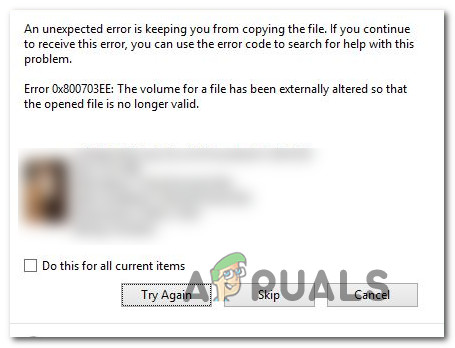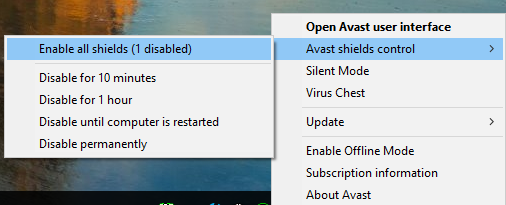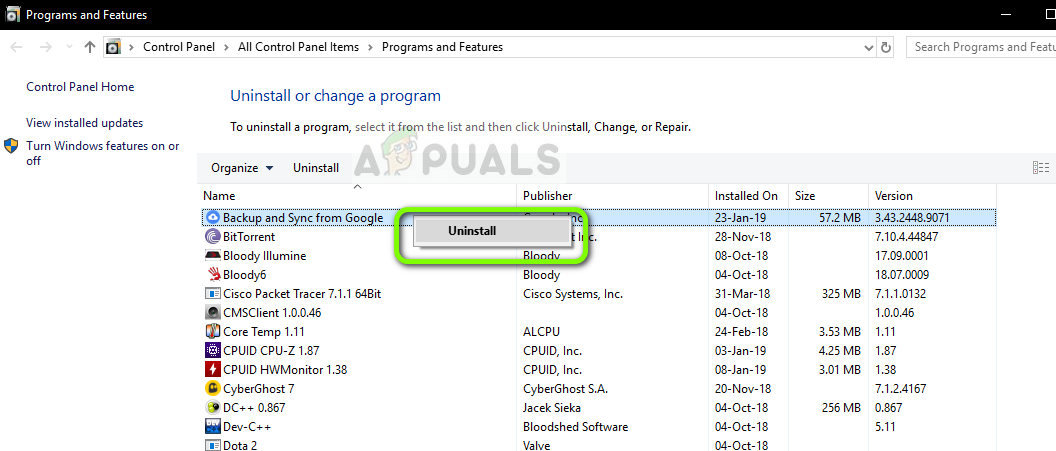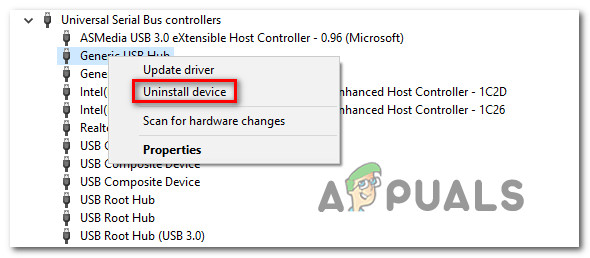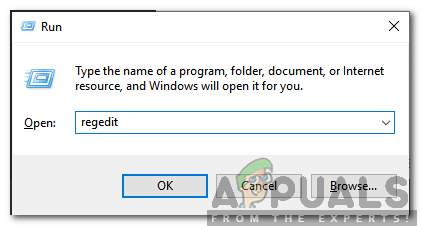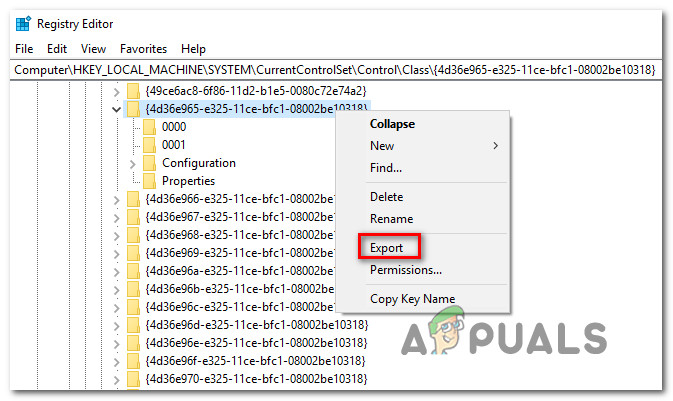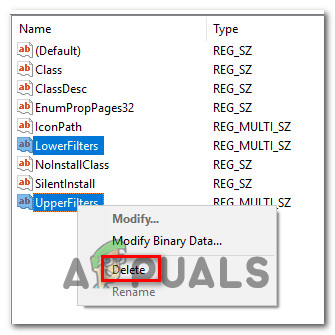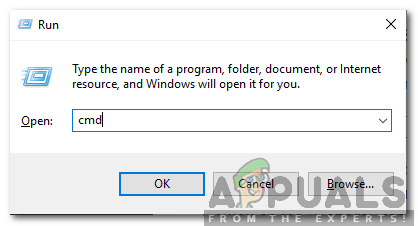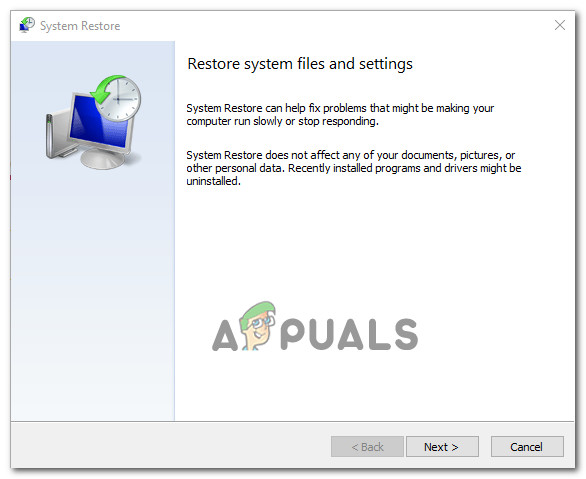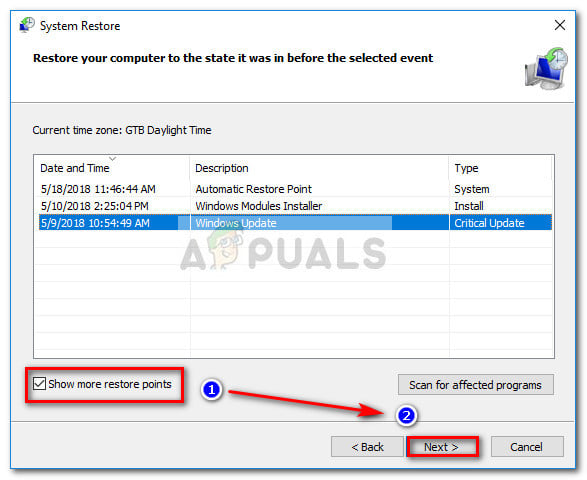What is causing the 0x800703EE Error with external storages?
We analyzed this problem by looking at various user reports and the most common repair strategies that are typically deployed to fix this issue. As it turns out, there are several different potential culprits that might cause this problem on Windows PCs: In the event that you’re struggling to resolve the very same error message, this article will provide you with several different troubleshooting guides that will help you pinpoint & fix the problem that’s triggering the 0x800703EE Error. Down below, you’ll find a collection of methods that have been confirmed to work by at least one affected user. If you want to be as efficient as possible, we advise you to follow the methods below in the order that they are presented. Eventually, you should stumble upon a fix that resolves the issue regardless of the culprit that’s causing it. Let’s begin!
Method 1: Disabling 3rd party antivirus
As it turns out, an overprotective Antivirus suite can also be responsible for the apparition of the 0x800703EE Error when copying files to or from external storage. In most cases. this will occur because the security suite is effectively locking the file while the security check is performed. If the procedure takes longer than expected, Windows might throw this error message as a result. Several affected users have reported that they managed to circumvent the issue by disabling the real-time protection of the AV suite while the operation is running. If the procedure completes without issues, you can then safely re-enable the real-time protection once again. If you’re overly annoyed by this error as you frequently perform operations that end up triggering this issue, the only way to get rid of them for good is to let go of your AV suite and migrate to a different 3rd party solution or to the built-in solution (Windows Defender). In the event that you decide to let go of your security suite, follow this article (here) to uninstall your security program without leaving behind any remnant files. If this method is not applicable to your particular scenario or this method didn’t fix the issue for you, move down to the next potential fix below.
Method 2: Uninstalling EaseUS (or a different backup program)
As several different users have reported, this particular issue can also occur if you have a backup program currently installed that is preventing the copying to or from the external storage. Ease Us, FBackup and Acronis True Image are top of the list of culprits in this case, but they can be others. Windows is not particularly fond of letting a 3rd party utility to use the same file while a copying operation is performing, so it throws the 0x800703EE Error instead. Several affected users have reported that they managed to resolve the issue in this case by uninstalling the backup program and restarting their computer. At the next startup sequence, most affected users have reported that the issue stopped occurring for them. Here’s a quick guide on uninstalling EaseUs or a different backup program that might be causing the 0x800703EE error indirectly: If the same error is still occurring, move down to the next method below.
Method 3: Reinstalling USB Controllers
Based on various user reports, it turns out that the 0x800703EE error might also occur if the USB Serial Bus controller used by the external device is not installed correctly or has became tainted by file corruption. If this scenario is applicable, you should be able to resolve the issue by using Device Manager to remove and reinstall all USB controller that might contribute to the apparition of this problem. By doing this and restarting your computer, you’ll force your Windows to automatically reinstall the USB controller drivers, which should end up resolving the issue. Here’s a quick guide on uninstalling & reinstalling the USB controllers using Device Manager: If you’re still encountering the 0x800703EE error, move down to the next method below.
Method 4: Enabling Windows Backup and Volume Shadow Copy
Another potential reason why you’d encounter the 0x800703EE error is the fact that one or both of these Windows services are disabled:
Windows BackupVolume Shadow Copy
This is known to happen in instances where the services are both disabled – either by manual user intervention or by a different 3rd party software (most likely a RAM optimizer app). In this case, you will be able to resolve the issue by using the Services screen to change the status of the two services to Automatic. Here’s a quick guide on enabling the two services (Windows Backup & Volume Shadow Copy) in order to resolve the 0x800703EE error: If you’re still encountering the same 0x800703EE error, move down to the next method below.
Method 5: Deleting the Filter Drivers
If you’re encountering this issue while you’re trying to transfer or copy files from pen drives, SDcards or other types of similar devices (including iPods or IPads), it’s very likely that you might be dealing with some type of conflict between the services used during this operation and your burner software. If this scenario is applicable, you will be able to resolve the issue by deleting the Filter Drivers using the Registry Editor. But keep in mind that after you do this, you might see some ‘writing disk errors’ with your burning software or on Itunes until you reinstall them. In the event that the description above is applicable to your current situation, here’s a quick guide on deleting the filter drivers using Registry Editor: Note: In case you’re having other issues after performing the procedure above and you want to undo it, simply visit Computer\HKEY_LOCAL_MACHINE\SYSTEM\CurrentControlSet\Control\Class\ using Registry Editor and go to File > Import. Then, select the backup file that you previously created and you should be good to go. If the same 0x800703EE error is still occurring, move down to the next method below.
Method 6: Performing SFC and DISM scans
The error code itself points toward a corruption issue. And although the issue is not actually caused by corrupted files, in some cases the 0x800703EE error occurs simply because Windows is dealing with a one or multiple system files that are corrupted and preventing the operation from completing. Several affected users have reported that they were able to resolve the issue by repairing corrupted files with utilities like System File Checker (SFC) or Deployment Image Servicing Management (DISM). Both utilities will ultimately repair system file corruption, but they do it differently. SFC uses a locally cached archive to replace corrupted system files with healthy copies while DISM relies on Windows Update to download the fresh copies needed to replace the bad ones. But since the two utilities work best together, we highly encourage you to use both in order to ensure that you fix every possible corruption instance that might be causing this problem. Here’s a quick guide on running SFC and DISM scans from an elevated Command Prompt: If you’re still encountering the 0x800703EE error when you try to copy to or from an external storage device, move down to the next method below.
Method 7: Doing a system restore
If you’ve come this far without a result, it’s clear that the issue is occurring for one of two reasons – it’s either a system file corruption issue that went undetected by the scans performed above or some kind of software conflict. Fortunately, if the issue only started to occur recently, you should be able to resolve the issue easily just by using a system restore point to bring your computer back in time to a healthy state. If you’re lucky enough to have a system restore point dated just before the apparition of this issue, the procedure below should help you resolve the issue. But keep in mind that this method will delete all changes that you made since the system restore point was created. All the apps you installed, the system preferences that you adjusted and everything else will be lost. If you’ve decided to perform a system restore, here’s what you need to do:
How to Fix Windows 10 Update Error 0x800703ee?Fix: Origin Can’t Load Up - ERROR CODE 106128 “External Service is Having Some…How to Fix Format Disk Error External Hard DriveFix: External Hard Drive ‘No Media Error’
